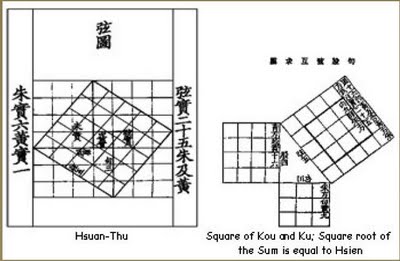OK, not every day. But whenever I shop for packaged retail goods like a coffee or in the grocers.
The Pythagorean theorem demonstrates that a slightly larger circle has twice as much area as a slightly smaller circle.
(Since the diagonal of that square is √2 long relative to the “1” of the interior radius=leg of the right triangle. So the outer radius=hypotenuse=√2, and √2 squared is 2.)
And some of us know from Volume Integrals in calculus class that a cylinder's volume = circle area × height — and something like a sausage with a fat middle, or a cup with a wider mouth than base, can be thought of as a “stack” of circle areas
or in the case of a tapered glass, a “rectangle minus triangle” (when the circle is collapsed so just looking at base-versus-height “camera straight ahead on the table” view).

The shell-or-washer-method volume integral lessons were, I think, supposed to teach about symbolic manipulation, but I got a sense of what shapes turn out to be big or small volume as well.
By integrating dheight sized slices of circles that make up a larger 3-D shape, I can apply the inverse-square lesson of the Pythagorean theorem to how real-life “cylinders” or “cylinder-like things” will compare in volume.
- A regulation Ultimate Frisbee can hold 6 beers. (It’s flat/short, but really wide)


- The “large” size may not look much bigger but its volume can in fact be.

- Starbucks keeps the base of their Large cups small, I think, to make the large size look noticeably larger (since we apparently perceive the height difference better than the circle difference). (Maybe also so they fit in cup holders in cars.)


